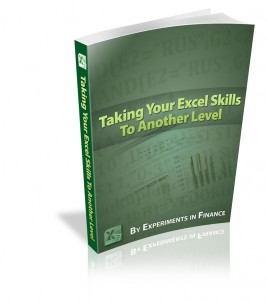Since I started investing on my own (roughly a year and half ago), I’ve been trying to be diligent about keeping track of my transactions and performance. I’ve found that individual investors very seldom know how they’re doing, or even if they’re beating the index. Excel makes this much easier to do, and I created a spreadsheet for this purpose (along with part one and part two instruction guides).
Yesterday, I sat down and assessed how my portfolio performance has been to date. The results are below. The portfolio includes money in a regular brokerage account, and my and my husband’s regular and Roth IRAs. (I didn’t include our 401ks, which are held at Fidelity and invested in four mutual funds among the selection available from our employers.) The portfolio also excludes my cash positions, the bulk of which are currently in soon-to-mature 3-month CDs at 5.41% APY and a money market fund.
A few things: first, I’ve included all dividend payouts, but not taxes. Trying to figure out the tax ramifications of my various dividend payouts, and those of the theoretical SPY would take more effort. Maybe next time.
Second, I just now realized after trying to figure out why my return on ANII differs from my calculations earlier that I ignored transaction costs of $9.95 per trade as well. I have chosen not to show absolute dollars invested, but these commission amounts are immaterial to the amount I have invested (save in the case of my small ANII transaction), and I originally ignored them because I was comparing my performance against an index. In the spreadsheet, what happens is that I create a theoretical portfolio in which I purchase and sell equivalent number of shares of SPY that matches against my transactions in my real portfolio, so trading costs are really the same.
Finally, I realize I’ve chosen to see how I’ve done while the market’s at its peak after a bull run, so I harbor no illusions that these returns are representative of what I can expect long term. That being said, I’m comparing my relative performance against SPY, so both my portfolio and SPY ought to be affected by the market’s ups and downs.
You’ll also notice that I currently hold only one individual stock, Nucor (NUE). The rest are ETFs, and there’s one bond fund (LSBRX) that I decided to purchase a couple months ago. Ideally, I’d like to find more stocks to invest in, but given the recent run-up, I’m guessing that finding value plays will be tough.
As for my dispositions, I’ve already previously written about my decision to sell NUE (apparently too early), PORK (lucking out on SFD’s buyout offer), and my special situations investing experience with ANII. As for SWTSX, I simply decided earlier this month to move my holdings in this mutual fund to increasing my position in VTI. The two are essentially the same, except VTI is an ETF and has lower expense ratios and no minimum holding period. (The long-term capital gains I incurred are offset by long-term capital loss carryovers that I still have from 2000.)
I’m happy to say I’ve at least beaten the S&P 500 index. Thank god. But the truth is that all of my holdings are also probably considered riskier, too. They’re comprised of foreign stocks, emerging market stocks, small-cap stocks, mid-cap stocks, and VTI, an ETF that replicates the total stock market, not just S&P 500 companies. So, really, I ought to be beating SPY. The two specific cases where I’m not are with EWG (Germany) and LSBRX. EWG was my husband’s choice (an economist by training, he’s bullish on the German economy), and LSBRX is a bond fund. I’m not concerned by either of these enough to change my investments in them, especially because they’re relatively recent investments.
Finally, I used Excel’s XIRR function to annualize my returns. XIRR is a little annoying to use, but it’s the easiest way to calculate annualized returns when holding periods are over a year and there are cash flows in and out at various times. I’ll write a little tutorial on this in the near future to complement my CAGR spreadsheet. I’ll try my best to check on and update my portfolio performance here once a quarter or so.
Feedback, thoughts, and questions are always welcomed.
***************************************************
Look Good at Work and Become Indispensable Become an Excel Pro and Impress Your Boss

***************************************************


Chuck
The spreadsheet seems pretty nice… have you ever thought about integrating the excel stock market functions into it to autoupdate the quotes? Seems like it would make the process easier to check the returns.
Ricemutt
I actually hadn’t considered that until I saw an add-in and spreadsheet using that functionality on George’s Fat Pitch Financials site. Looks like I have some changes to make for version 2.0 :) Thanks for the suggestion.
How to use XIRR in Excel to calculate annualized returns | Experiments in Finance
[…] In fact, the two CAGR tools I created really only work when you have one initial amount and one final amount, and if that’s your situation, then they work wonderfully. But how can you calculate annualized returns if you put in money to invest in an account more than once, or if you make withdrawals more than once over a period of time? (This was actually exactly the situation I faced when I calculated my stock portfolio performance recently.) […]
GARIMA
Thank You so much.
It was great learning.